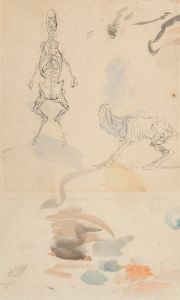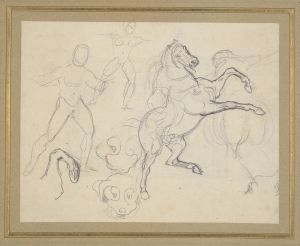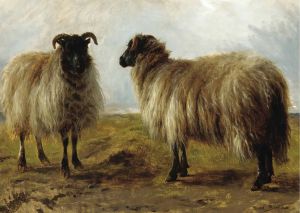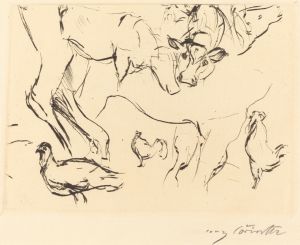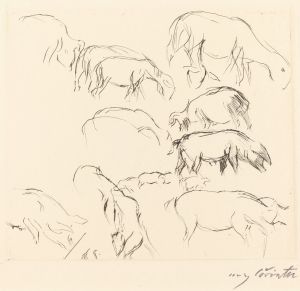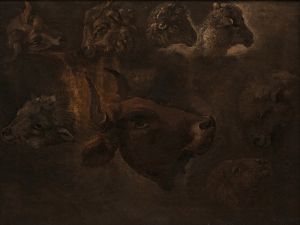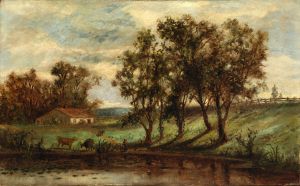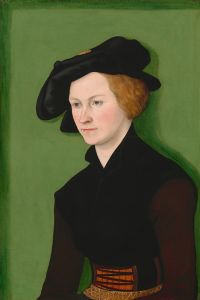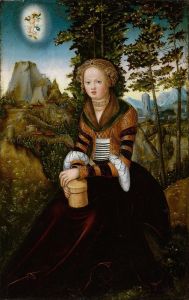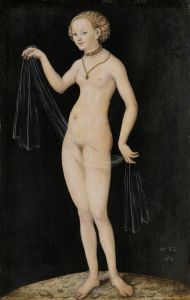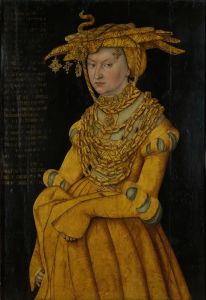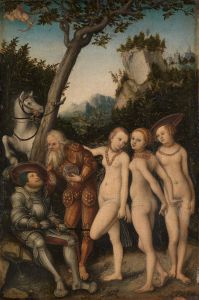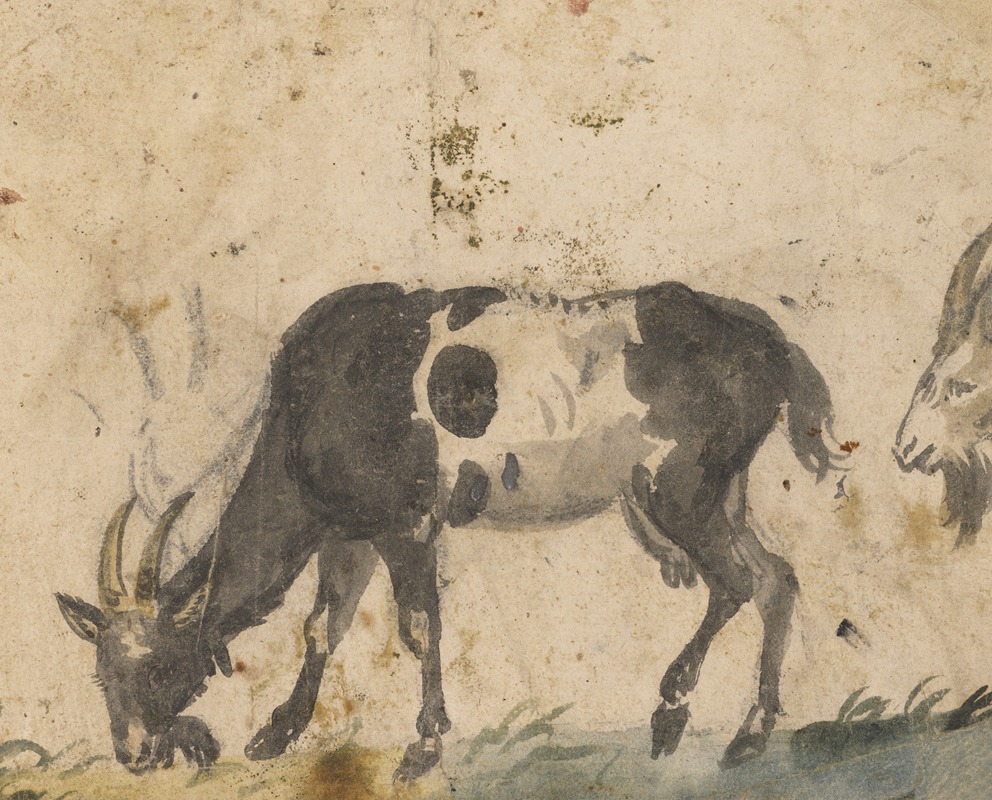
Study of Goats
A hand-painted replica of Lucas Cranach the Elder’s masterpiece Study of Goats, meticulously crafted by professional artists to capture the true essence of the original. Each piece is created with museum-quality canvas and rare mineral pigments, carefully painted by experienced artists with delicate brushstrokes and rich, layered colors to perfectly recreate the texture of the original artwork. Unlike machine-printed reproductions, this hand-painted version brings the painting to life, infused with the artist’s emotions and skill in every stroke. Whether for personal collection or home decoration, it instantly elevates the artistic atmosphere of any space.
Lucas Cranach the Elder, a prominent German Renaissance painter and printmaker, is known for his distinctive style and contributions to the art world during the 16th century. One of his lesser-known works is "Study of Goats," a painting that exemplifies his keen observation skills and ability to capture the natural world.
"Study of Goats" is a detailed and realistic depiction of goats, showcasing Cranach's talent in rendering animals with precision and lifelike quality. The painting is characterized by its meticulous attention to detail, from the texture of the goats' fur to the naturalistic portrayal of their anatomy and posture. This work reflects Cranach's interest in the natural world and his ability to translate his observations into art.
Lucas Cranach the Elder was born in 1472 in Kronach, in the Franconian region of Germany. He became one of the leading artists of the German Renaissance, known for his portraits, religious scenes, and mythological subjects. Cranach was also a close friend of Martin Luther and played a significant role in the Protestant Reformation, producing numerous portraits of Luther and other reformers.
Cranach's workshop was highly productive, and he employed a large number of assistants to help meet the demand for his work. This allowed him to produce a vast number of paintings, prints, and drawings throughout his career. His style is marked by its clarity, precision, and the use of vibrant colors, which can be seen in "Study of Goats."
The painting itself is a testament to Cranach's skill in capturing the essence of his subjects. The goats are depicted in various poses, some grazing, others standing alert, showcasing their natural behavior. The background is typically simple, allowing the viewer to focus on the animals themselves. This approach is consistent with Cranach's other works, where he often used minimalistic backgrounds to highlight the main subjects of his paintings.
"Study of Goats" is not as widely known as some of Cranach's other works, such as his portraits of Martin Luther or his mythological paintings like "The Judgment of Paris." However, it remains an important piece within his oeuvre, demonstrating his versatility as an artist and his ability to capture the beauty of the natural world.
Cranach's influence extended beyond his lifetime, with his sons, particularly Lucas Cranach the Younger, continuing his artistic legacy. The elder Cranach's works are held in high regard and can be found in major museums and collections around the world, including the Alte Pinakothek in Munich, the Gemäldegalerie in Berlin, and the National Gallery in London.
In summary, "Study of Goats" by Lucas Cranach the Elder is a fine example of the artist's ability to depict animals with remarkable accuracy and detail. It reflects his broader interest in the natural world and his skill in rendering lifelike images. While not as famous as some of his other works, it remains a valuable piece that contributes to our understanding of Cranach's artistic achievements and his place in the history of Renaissance art.





